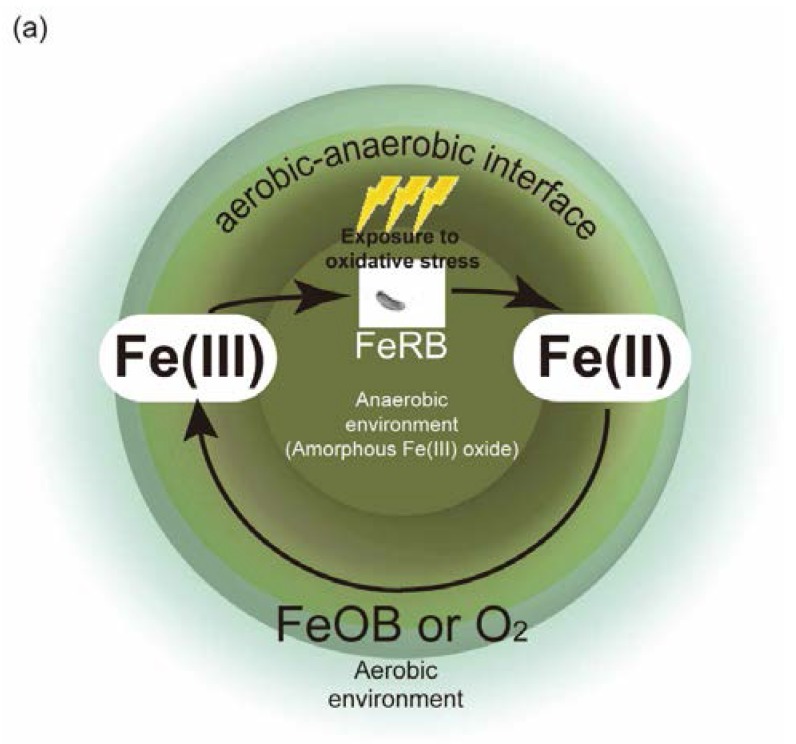Figure 4.
(a) Schematic diagram of possible functions of LC-PUFAs and LC-HCs. The conceptual model of the aerobic-anaerobic interface is taken from Roden et al. [101]. Metal-reducing bacteria (FeRB) harboring the pfa-like and ole genes (for example, Geobacter bemidjiensis BemT) are assumed to produce LC-PUFAs and/or LC-HCs. Those genes might have been evolutionarily obtained (via HGT?) or conserved as descendant genes from ancestral bacteria that harbored the pfa-like and ole genes. FeRBs utilize Fe(III) (amorphous Fe(III) oxide) as the terminal electron acceptor and reduce it to Fe(II) under an anaerobic environment. Fe(II), in turn, is oxidized by iron-oxidizing bacteria (FeOB) or oxygen (O2). The environment becomes more aerobic as it is separated from the center of the circle (anaerobic environment; brown circle). FeRBs are exposed to oxidative stress at the aerobic-anaerobic interface, which might be potentially alleviated by LC-PUFA and/or LC-HCs. (b) A possible route for conservation of the pfa-like gene in anaerobic bacteria. This conceptual model, though speculative, shows the possibility of the pfa-like gene being harbored in anaerobic bacterium capable of producing LC-PUFA and/or LC-HCs. For comparison, possible routes of pfa-like gene conservation in marine and aerobic bacteria are also depicted in this figure.


